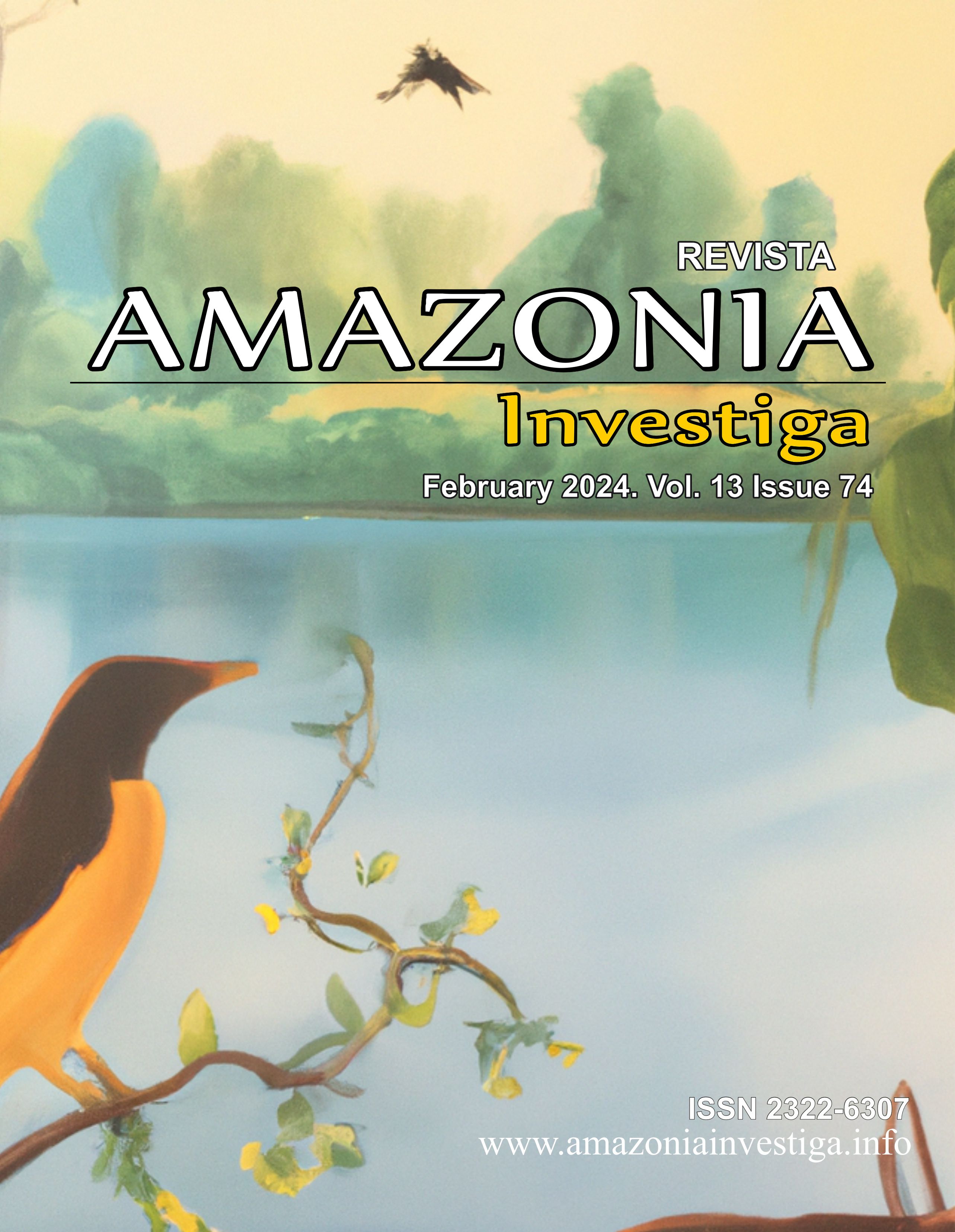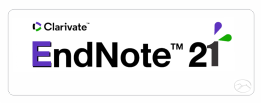Augmented reality in higher school as a tool for implementation of STEM education
Publicado 2024-02-29
Palabras clave
- elements of augmented reality, higher school, STEM education, students of higher education, modern innovative technologies in education.
Cómo citar
Resumen
The article provides a meaningful definition of the concepts of STEM technology, STEM education, STEM approach, and STEM training; the meaning and main ways of using elements of augmented and virtual reality for higher education as a means of implementing STEM education are revealed. The purpose of the article is to show the importance and necessity of using elements of augmented reality in higher education as a means of implementing STEM education. As a result, an experimental study was conducted to clarify the state of development and the use of modern innovative technologies in education, clarifying the question – of to what extent modern technologies can effectively organize distance learning, and STEM education in higher education when using elements of augmented reality, which are provided to messengers preference of educators, which platforms are used by teachers in working with students of higher education during quarantine, etc. The conclusions summarize the most effective modern technologies for preparing and conducting practical online classes in higher education as a means of implementing STEM education and highlight the most important condition for creating a STEM environment in higher education.
Descargas
Citas
Bascopé, M., & Reiss, K. (2021). Place-Based STEM Education for Sustainability: A Path towards Socioecological Resilience. Sustainability, 13(15), 8414. https://doi.org/10.3390/su13158414
Buitrago, L. M., Laverde, G. M., Amaya, L. Y., & Hernández, S. I. (2022). Pensamiento computacional y educación stem: reflexiones para una educación inclusiva desde las prácticas pedagógicas. Panorama, 16(30), 199-223. https://dialnet.unirioja.es/servlet/articulo?codigo=8604067
Drokina, A. S. (2023). The use of augmented reality technologies as an effective means of implementing STEM education by future primary school teachers. Academic visions, 25. https://www.academy-vision.org/index.php/av/article/view/687
Dulce-Salcedo, O. V., Maldonado, D., & Sanchez, F. (2022). Is the proportion of female STEM teachers in secondary education related to women's enrollment in tertiary education STEM programs?. International journal of educational development, 91, 102591. http://doi.org/10.1016/j.ijedudev.2022.102591
Horbachenko, V. I. (2021). The role of virtual reality systems for education (p. 25-27). In Report of the scientific-practical conference of the Institute of Information Technologies and Teaching Aids of the National Academy of Sciences of Ukraine: scientific-practical materials conference. IITZN National Academy of Sciences of Ukraine, Kyiv, Ukraine. https://lib.iitta.gov.ua/724023
Laurens-Arredondo, L.A. (2022). Evaluación del uso del aprendizaje móvil en la educación STEM: Una experiencia de estudiantes universitarios en tiempos de pandemia. Revista de Investigación en Educación, 20(2), 172-187. https://doi.org/10.35869/reined.v20i2.4224
Lytvynova, S. (2022). Readiness of students of general secondary education institutions to use virtual reality in the educational process. Perspectives and innovations of science, 4(9), 218-231. https://doi.org/10.52058/2786-4952-2022-4(9)-218-230
Lytvynova, S. (2023). Use of Blippbuider augmented reality service by teachers of science and mathematics subjects in educational practice. Scientific Bulletin of Uzhhorod University. Series: Pedagogy. Social work, 1(52), 98-105. https://doi.org/10.24144/2524-0609.2023.52.98-105
Macías, W., Rodríguez, K., Arosemena-Burbano, F., & Zhangallimbay, D. (2023). La intención de enrolarse y recomendar una universidad para carreras STEM: un enfoque de valoración de marcas. Estudios Gerenciales, 39(169), 453-463. https://acortar.link/K3P2sJ
Mintii, M. M. (2023). Preparation of future teachers of STEM disciplines for applying augmented reality technologies in professional activities (Unpublished Doctor of Philosophy dissertation). Kryvyi Rih State Pedagogical University. https://acortar.link/OWqFao
Oleksiuk, O. R., & Oleksiuk, V. P. (2021). Some aspects of the formation of teachers' readiness to use immersive technologies in the system of postgraduate pedagogical education (p. 114-117). Immersive technologies in education: collection of materials of the 1st scientific-practical conference with international participation. National Academy of Sciences of Ukraine. http://elar.ippo.edu.te.ua:8080/handle/123456789/5787
Pinchuk, O. P., & Luparenko, L. A. (2022). The didactic potential of using digital content with augmented reality. Modern information technologies and innovative teaching methods in the training of specialists: methodology, theory, experience, problems, 63, 39-57. https://vspu.net/sit/index.php/sit/article/view/5061
Plakhotnik, O., Zlatnikov, V., Strazhnikova, I., Bidyuk, N., Shkodyn, A., & Kuchai, O. (2023). Use of information technologies for quality training of future specialists. Amazonia Investiga, 12(65), 49-58. https://doi.org/10.34069/AI/2023.65.05.5
Polikhun, N. I., Postova, K. H., Slipukhina, I. A., Onopchenko, H. V., & Onopchenko, O. V. (2019). Implementation of STEM education in conditions of integration of formal and informal education of gifted students: methodological recommendations. Institute of the Gifted Child of the National Academy of Sciences of Ukraine. https://core.ac.uk/download/pdf/286032301.pdf
Rakhmanina, A., Pinchuk, I., Vyshnyk, O., Tryfonova, O., Koycheva, T., Sydorko, V., & Ilienko, O. (2022). The usage of robotics as an element of STEM education in the educational process. International Journal of Computer Science & Network Security, 22(5), 645-651. https://doi.org/10.22937/IJCSNS.2022.22.5.90
Semerikov, S. O., Lytvynova, S. H., & Mintii, M. M. (2020). Implementation of a course on developing virtual and augmented reality software tools for future teachers of STEM disciplines. Modern information technologies and innovative teaching methods in the training of specialists: methodology, theory, experience, problems, 57, 55-63. https://doi.org/10.31812/123456789/4141
Shetelya, N., Oseredchuk, O., Cherkasov, V., Kravchuk, O., Yarova, L., & Kuchai, O. (2023). Competency approach in preparing professionals in an innovative educational environment in higher education. Revista Conrado, 19(S3), 298-307. https://conrado.ucf.edu.cu/index.php/conrado/article/view/3512
Stryzhak, O., Slipukhina, I., Polisun, N., & Chernetskyi, I. (2017). STEM education: basic definitions. Information technologies and learning tools, 62(6), 16-33. http://nbuv.gov.ua/UJRN/ITZN_2017_62_6_4
Valko, N. V. (2020). The system of training future teachers of natural and mathematical disciplines for the use of STEM technologies in professional activity (Unpublished doctor of pedagogical science dissertation). Kherson State University. https://acortar.link/ANyGEa











